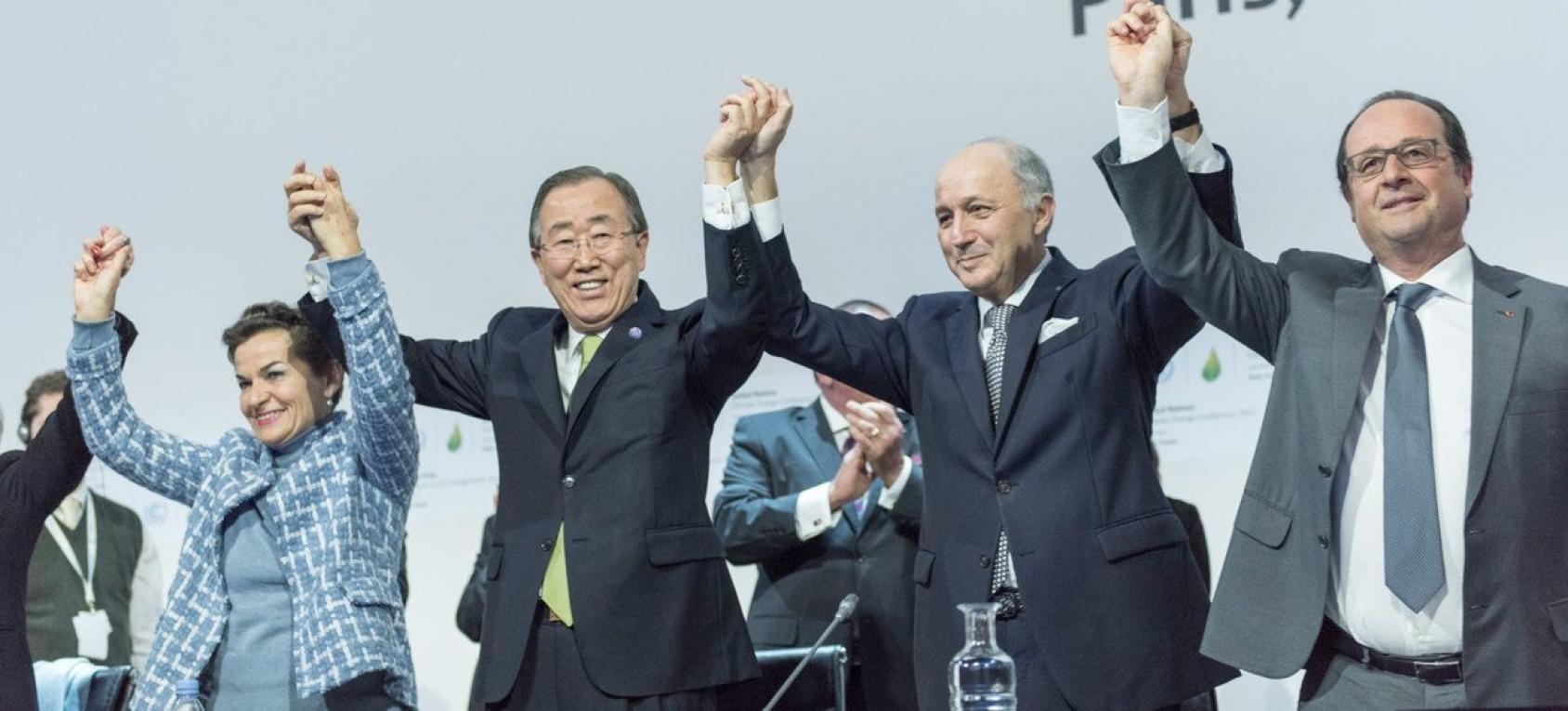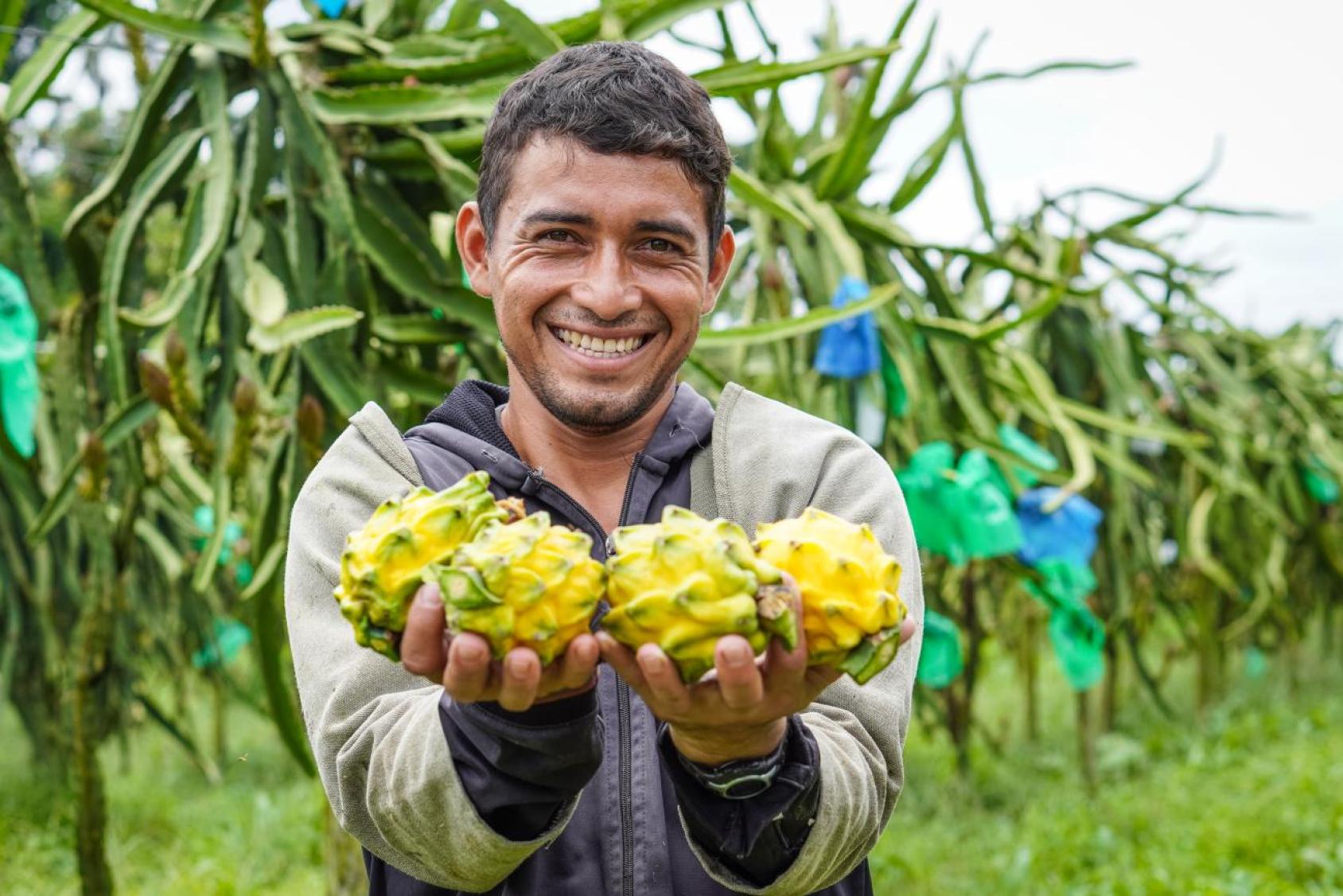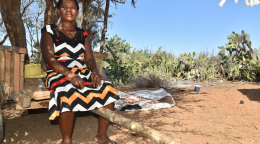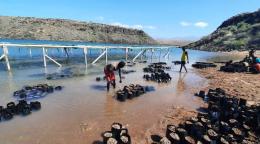Achieving the Paris Agreement Goals: Our Race to the Top

On 12 December 2015, the world reached consensus on the Paris Agreement – our legally binding, universal treaty to combat climate catastrophe. I was fortunate to be in the room when it happened, celebrating with thousands of negotiators as the leaders on the podium raised their hands high.
Amid the euphoria, our call to action was equally loud and clear: to follow through on our promises. It seemed impossible that we wouldn’t.

The Promise of Paris
What did we promise? In essence, three things.
- First, to limit global temperature rise to less than 2°C above pre-industrial levels, and ideally below 1.5°C, aiming for climate neutrality later this century. Research shows that 2°C avoids the most catastrophic effects of climate change and 1.5°C keeps many island nations above water.
- Second, each country would set its own climate policies. Limiting temperature rise means reducing greenhouse gas (GHG) emissions by scaling up renewable energy and weaning our world off the fossil fuels upon which we depend for electricity, transport, food production, construction and more. This shift has short-term costs but long-term benefits, so each country must determine its own path based on its needs.
- Third, every five years, all countries would increase their ambitions in these nationally determined contributions (NDCs). Though the first NDCs were not enough to meet the temperature goals, the idea was that future updates would close the gap. A race to the top.
The Progress Since Paris: A Dearth of Ambition
Ten years on, progress is slow. The first NDCs in 2015 put the world on a 3.7°C trajectory. By 2021, the second round improved this to 2.7°C if fully implemented. As of 11 November 2025, with COP30 proceeding in full swing in Belem, Brazil, 112 nations have submitted third-generation NDCs. Initial analyses suggest that, on aggregate, they target some reduction in emissions from 2019 levels by 2035.
But it is far from enough. Achieving the 1.5°C goal requires a 60 per cent reduction in emissions from 2019 levels by 2035. Temporarily surpassing 1.5°C is now almost inevitable, and we will need gargantuan efforts to bring temperatures back down.

Global crises have hampered progress. COVID-19 and the war in Ukraine triggered economic shocks, rising debt and resource constraints, pushing climate action down the agenda. Political shifts also led some governments to retreat from climate leadership, creating further uncertainty.
The Big Picture: From Nationally Determined to Nationally Owned
Clearly, we are not yet racing to the top. But there is more to the NDCs than their sum. A closer look reveals a more hopeful story.
In 2015, NDCs were often vague documents from the environment or foreign ministries, with limited input from other parts of government and little connection to national budgets. Most did not address all sectors producing GHG emissions.
But the second generation covered additional sectors and gases, with more precise targets and broader government ownership, albeit without commensurate increase in ambition. This broader ownership was also seen as diverse ministers, from power and transport to finance, joined climate conferences, with discussions increasingly focused on sectoral decarbonisation.
The third generation strengthens this trend. Many align with national plans on biodiversity, food, gender equality, jobs. They are more ambitious; and many are designed to attract investment for a green economy. NDCs increasingly reflect the structural changes countries are preparing for. They are, in effect, investment plans for the Sustainable Development Goals (SDGs).

This evolution matches today’s reality: renewable energy is now cost-competitive with fossil fuels. Through heavy investment, even oil-producing countries recognise the need to move away from fossil fuels, as seen at COP28 in Dubai, where all countries committed to tripling renewable capacity and doubling energy-efficiency gains by 2030.
So, despite political turmoil, the global undercurrent is promising. Countries are laying the foundation for exponential growth in climate ambition and action.
NDC Support: Racing as a Pack
This shift to greater ownership and ambition has happened through painstaking effort. Since 2016, many partners have helped countries strengthen their climate plans by aligning support with national priorities and providing technical assistance to accelerate NDC implementation, improve quality, mobilise finance and integrate NDCs into national development plans and budgets.
Through the Climate Promise, the UN system plays a central role. Over the past 18 months, under the convening leadership of the UN Resident Coordinators and with the technical leadership of UNDP, UN teams in over 100 countries supported governments in preparing new NDCs. By harnessing the full strength of the UN development system, UN Resident Coordinators have helped advance more integrated and ambitious climate policies, providing close support to national ministries.
- In Cambodia, in consultation with women and youth, 12 UN entities supported sectoral assessments to help set targets under a new NDC, including an 80 per cent renewables share and 60 per cent efficient clean cooking by 2035, halving deforestation by 2030 and boosting adaptation, aiming for a 55 per cent GHG reduction by 2035 compared to business as usual.
- In Ecuador, six UN entities supported integration of climate into economic policy and financial instruments such as the Sovereign Sustainability-linked Bond and assessments of carbon market readiness, helping set the country’s first economy-wide GHG target: a 15 per cent reduction below business as usual for 2026-2035.
- In Nigeria, five UN entities contributed to setting an economy-wide target of 32 per cent GHG reduction by 2035 against 2018 levels, raising renewable share from 22 to 52 per cent in 2035, enhancing energy efficiency and strengthening adaptation with a focus on just transition and social inclusion and linking with the SDGs.
Ten years after Paris, one thing is clear: keeping our promises demands relentless effort across all sectors, tailored to each country’s reality. The task ahead is mountainous, especially if we want to limit the overshoot and return to 1.5°C. But as Secretary-General Antonio Guterres recently said, “Going above 1.5°C has devastating consequences… It is absolutely indispensable to change course.” We must advance. Not from a standstill, but from a decade of hard-won progress. Now is the time to build on that momentum. Let us harness the UN’s unique role, fully implement the NDCs we have, and pave the way for higher ambition and more impactful action. Together, we can speed up and win this race to the top.

This blog is authored by Poorti Sapatnekar, Sustainable Development Officer, UN Development Coordination Office. Please click here for more information about COP30.
























